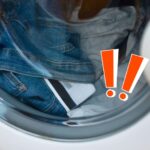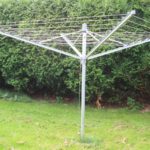Have you been thinking about getting your clothes dry cleaned, but you’re not quite sure what the dry cleaning process entails? If this is you, you’re in the right place.
Find out how clothes are dry cleaned in the UK right now.
Here in the UK when you take your laundry to a dry cleaners the items you need cleaned typically go through six phases. Although there may be some variation between these phases, most dry cleaners try to stick to the process outlined below.
The six phases are as follows:
- Tagging clothes
- Pre-treating clothes
- Dry cleaning clothes
- After cleaning treatment
- Pressing clothes
- Packing clothes
Let’s go into more detail about these phases.
Note: There is likely to be some variation noted in the steps below when you compare one dry cleaner to another. In addition to this, different dry cleaners do use different products.
And finally, the liquid solvent perchloroethylene does have a reputation as a poor chemical, so not all dry cleaners use this, instead they might use a carbon dioxide-based alternative.
Step 1: Tagging Clothes

A tag is stuck onto every individual item of clothing an individual brings into the dry cleaning store. And these tags stay in place throughout the entire dry cleaning process.
On the tag you will likely find the following information:
- Name and contact information of the customer.
- There may be an identification number.
- A small description about the state of the clothing may be given.
- Date and time of collection.
- Information about a particular stain.
Of course, each and every dry cleaner will have their own tagging system, and some companies may use different coloured tags to indicate a particular problem, for example.
In addition to this, the details listed above, and any other information about the items and the owner, might be logged on a computer for safe keeping.
Further to this, by tagging every item the dry cleaning store can make sure that all of the items brought in by one customer are packed together and are ready for collection.
Step 2: Pre-Treating Clothes
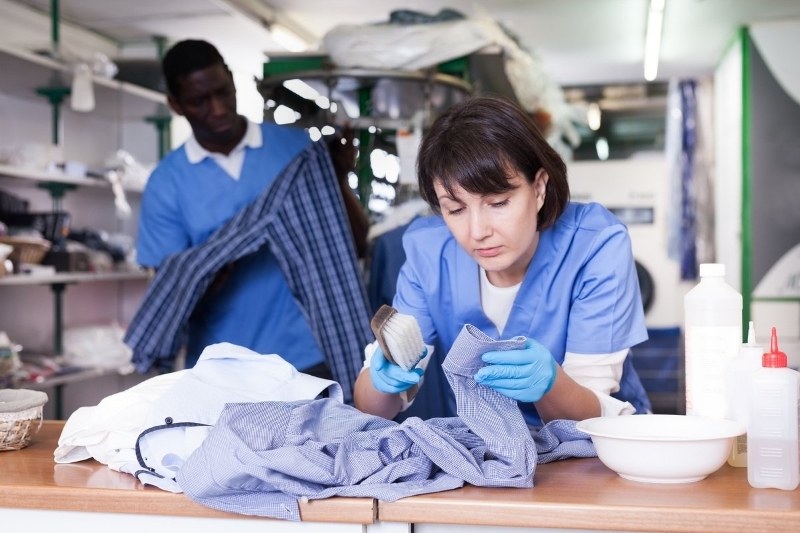
During this pre-treatment phase any stains found on the clothes are treated. The aim is to try and remove the stain as much as possible. However, the age of a stain, how set-in it is, and the makeup of the stain do directly impact how easy it is to remove it.
Generally, greasy and oil-based stains are easy to remove when items of clothing are being dry cleaned. Water based stains, not so much.
Each dry cleaner will have their own products that they use to treat and remove stains. But if you are concerned there’s no harm in asking them about the items they plan on using.
Step 3: Dry Cleaning Clothes
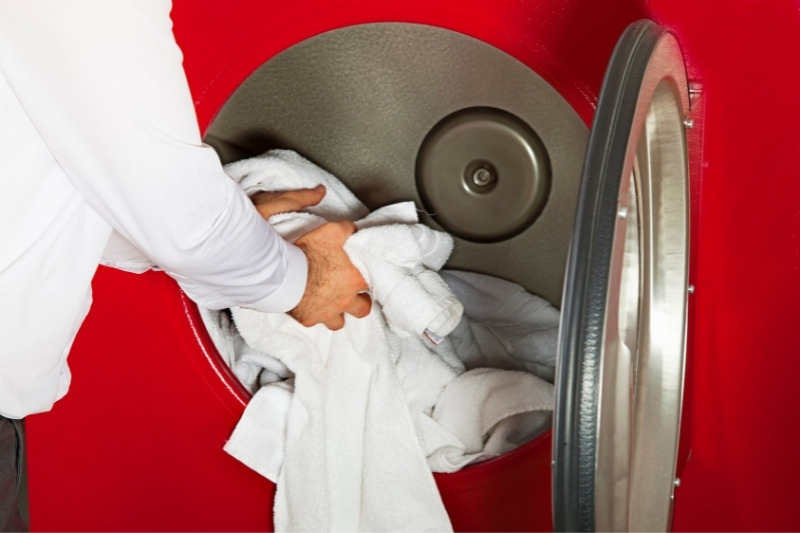
The dry cleaning phase itself, as you might have guessed, is the main phase during this entire process. So, what actually happens?
To understand what really happens during this phase you need to understand the difference between normal cleaning and dry cleaning…
The key difference between washing clothes normally and dry cleaning clothes is that during a dry cleaning session clothes are cleaned with a liquid solvent. Whereas when you wash clothes normally they get saturated in water.
With this in mind, let’s take a look at what happens during dry cleaning in more detail…
So, when clothes go to the dry cleaners they get popped into a large machine that looks very similar to a washing machine. However, it’s not a washing machine as you know it. This appliance is actually a washer-extractor-dryer all in one, and it works specifically with liquid solvents and not water. If you want to see what they look like, check out the dry cleaning suppliers Renzacci.
In general, the appliance is prepared by the user and the clothes get placed into the heart of the machine. The door is then closed and the start button gets pushed, the machine then gets to work.
Once the program has started the basket, which is holding the clothes, will start to spin. At the same time liquid solvent, usually perchlorethylene (perc for short), starts to flow into the heart of the machine. (Various pumps spray the solvent over the clothes to clean them).
The agitation and the solvent work together to dry clean the clothes. And the old/dirty solvent gets pumped back through the filter and comes out clean, over and over again during this entire process.
This specific phase doesn’t usually take very long and in some cases, it can be as little as a few minutes.
Once the clothes have been cleaned by the liquid solvent, the washer starts to spin the clothes around quickly to extract the excess solvent from the fibres of the material.
The final exercise during this phase is to warm the clothes up and to dry them. The heat also helps to vaporise the rest of the liquid solvent that is left behind in the heart of the machine.
Note: In some dry cleaners they may use a carbon dioxide based liquid solvent instead of perchlorethylene.
Step 4: After Cleaning Treatment
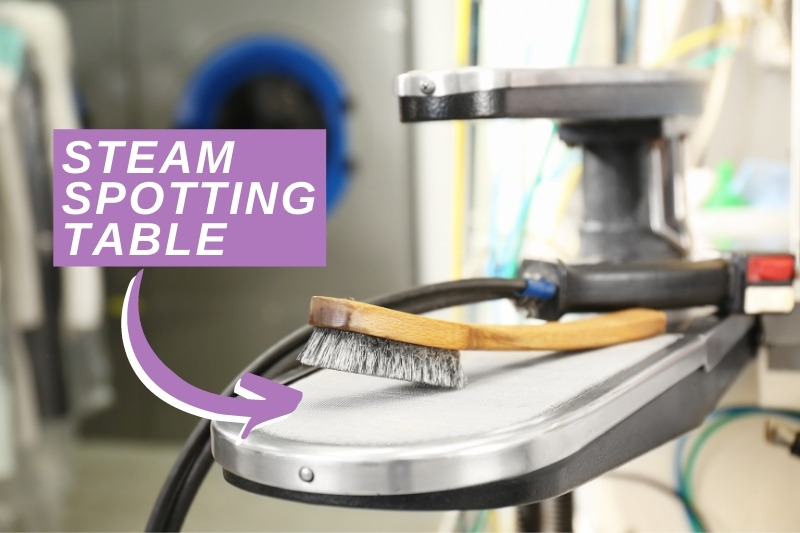
When the clothes have finished their cycle in the dry cleaning machine, the items are removed and are inspected for marks and stains.
If any unwanted stains are found the cleaner will treat these stains again. There are various ways these stains can be removed, and individual dry cleaners typically use the method they prefer.
Some of these stain removal methods involve:
- Steaming clothes
- Airing clothes
- Water
However, as noted above, the older the stain, the harder it may be to remove. With this in mind, it’s worth pointing out that even after dry cleaning clothes that are stained, some residue may be left behind.
Plus, as mentioned earlier, not all stains are going to come out during the dry cleaning process. Water based stains, for example, don’t always get removed during the dry cleaning process.
Other marks, like bleach stains and sunlit damaged garments, may not be removed after dry cleaning has taken place either.
Step 5: Pressing Clothes
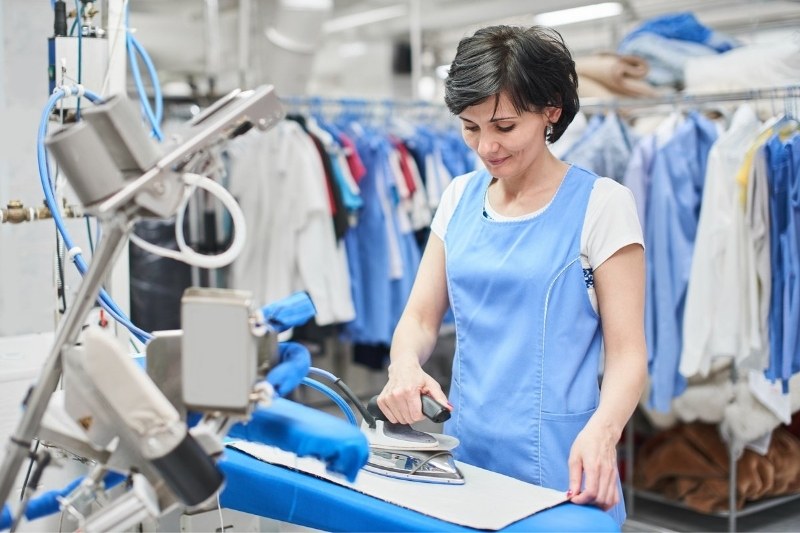
This is one of the last few phases in the dry cleaning process, and this is when the clothes are checked over, repaired (if required), steamed, reshaped and ironed.
Step 6: Packing Clothes

Once all the dry cleaning has been completed and the items are ready to go home to their rightful owner, the items are packed up in a bag. All the items that one customer brought in are usually put back together.
Tags are typically checked at the end to make sure the right person has the right item – and/or the right amount of clothes!
Is it Okay to Use a Dry Cleaner?

There is some debate over this issue, however, it’s entirely up to you if you would like to give dry cleaning a go. Here’s some food for thought on the matter…
Dry cleaning can sometimes be an expensive option, you have to read the small print when you use dry cleaners just in case something goes wrong, and the dry cleaning process involves a lot of chemicals being used to clean your clothes.
That being said, a lot of clothes can really only be dry cleaned, many people find the dry cleaning process very simple and convenient, and individuals like the idea of professional cleaners handling and maintaining their favourite items.
Can You Dry Clean Clothes at Home?
Yes, you can dry clean clothes at home, but you need to buy a dry cleaning kit to do this.
Here are some products you could look into:
- Dryel’s At-Home Dry Cleaning Starter Kit is a handy beginners kit for those of you who’d like to give dry cleaning a go. It’s relatively simple to dry clean your items using this product, and you can clean about 20 products in around 15 minutes. The only drawback is that it may not remove extremely tough and hardened stains.
- If you’re looking for an item that you can pop into your tumble dryer, alongside your dry clean only clothes, then check out Dry Cleaner’s Secret 20 Minute Cleaner. In the box you get six cloths and they can clean around 20 garments.
Do keep in mind that not all products are going to work dry cleaning wonders for you. Often, items get mixed reviews, so before you buy a product do your research and weigh up your options.
Do You Have to Dry Clean “Dry Clean Only” Clothes?
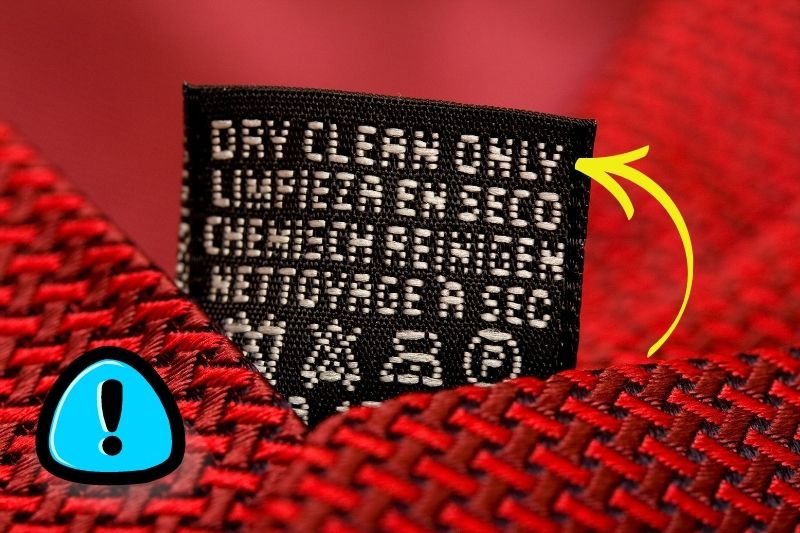
It’s always best to check what the tag on your item of clothing says, and it is better if you can stick to it. Of course, if you do want to wash a delicate item in a washing machine, you do so at your own risk.
What Materials Should Always Be Dry Cleaned?
Generally, anything that’s got some sort of fancy, detailed embroidery on it should be dry cleaned. As well as, silks, suedes, cashmeres, velvets and leathers, for example.
Will My Dry Cleaned Clothes Smell Clean?
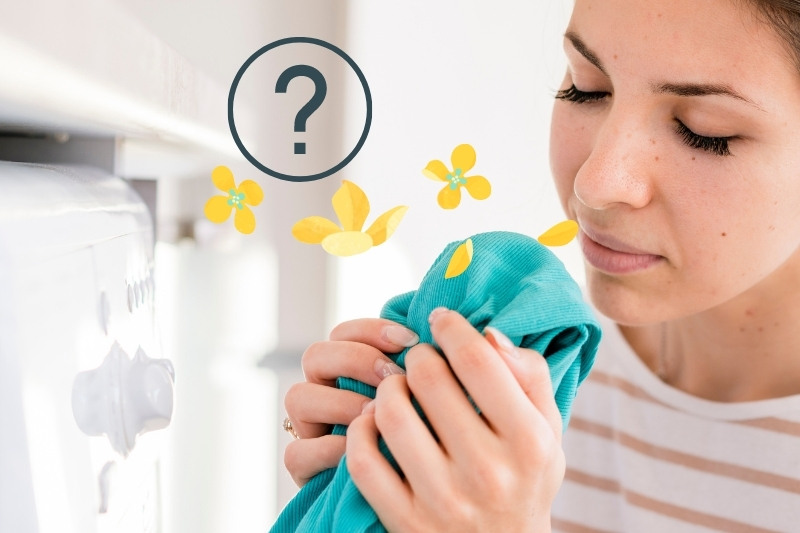
The process of dry cleaning is there to break down toughened dirt on delicate materials.
However, while this is usually achieved, not all clothes come out smelling of roses, per se. And while the process does remove poorer odours from garments, it may not leave items with that pungent smell you get when you open your washing machine door after a wash cycle has ended.
But, of course, there are some people who think that their clothes smell wonderful after being dry cleaned. It does, after all, come down to personal preference and sense of smell.

Bethan has a passion for exploring, reading, cooking and gardening! When she’s not creating culinary delights for her family, she’s concocting potions to keep her house clean!





